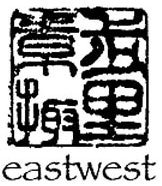Horace Bristol
dal 29/11/2006 al 14/1/2007
Segnalato da
29/11/2006
Horace Bristol
East West Gallery, Santa Barbara
A retrospective show featuring photographs from 1933-1963

A retrospective show featuring photographs from 1933-1963
Horace Bristol, one of the original LIFE magazine photographers and the impetus for John Steinbeck’s Pulitzer Prize winning epic The Grapes of Wrath, is the focus of a retrospective exhibition in Santa Barbara at the East West Gallery.
Horace Bristol, working as a staff and freelance photojournalist for some of the 20th Century’s most significant publications, including Time, LIFE, Fortune, and National Geographic, used his camera to record the human, intimate moments in the grand sweep of history. He captured the best and the worst of this century, from poignant images of the urban poor and migrant farm workers during the Depression, to battle scenes of World War II and compelling portraits of post-war Japan and Southeast Asia.
Born November 16, 1908 in Whittier California, Bristol studied at the just-opened Art Center of Los Angeles, where he was exposed to the subtle, painterly images of Edward Steichen and the powerful industrial landscapes of Margaret Bourke-White. In 1933, Bristol moved to San Francisco to pursue commercial photography, renting a studio a few doors down from Ansel Adam’s gallery near Union Square. Through Adams, Bristol befriended members of the famed “Group f/64", including Edward Weston, Dorothea Lange and Imogen Cunningham.
Bristol began contributing to LIFE magazine as a freelancer in June 1937, and garnered his first cover just two months later. He was soon hired on staff, working alongside such photographic giants as Alfred Eisenstaedt, Peter Stackpole, and a personal hero, Margaret Bourke-White. Late in 1937, Bristol proposed a story about migrant farm workers in California’s Central Valley—a project that would include accompanying text by novelist John Steinbeck. Though LIFE turned down the story, Bristol and Steinbeck agreed to collaborate on a book-length project, and the two men spent several weekends in labor camps during the winter of 1938. Bristol took hundreds of photographs of the suffering farm workers, only to have Steinbeck withdraw from the partnership to write the story as a novel, which became his masterpiece The Grapes of Wrath.
After the attack on Pearl Harbor in December 1941, Bristol was recruited by, Edward Steichen, the most influential photographer of the 20th Century, to be one of five photographers to document World War II under his U.S. Naval command. Bristol, like a true magazine and newspaperman, captured images of patriotism and heroism with the human interest story as the visual focal point. His most recognized image from this time is of a young PBY Blister Gunner nude at his post after rescuing a fellow officer.
Bristol’s career led him to Asia following World War II, where he spent 25 years documenting the rapid modernization of Japan, Formosa (now Taiwan), Korea, China, and Burma. He photographed the region’s leaders during this import transitional period in history, including exiled Chinese leader Chiang Kai-Shek, president Sukarno of Indonesia, the coronation of Prince Norodom of Cambodia, and Japanese Emperor Hirohito’s first visit to view Hiroshima after the devastation of the war.
In 1956, devastated by the suicide of his wife, Bristol burned all the negatives and photographs that he kept at his seaside house in Japan, effectively ending one of the most intense photographic careers of his time. His remaining photographs were packed into footlockers, stored, and left untouched for nearly thirty years.
Having put photography behind him and remarried, Bristol was reminded of his past when his 15-year old son Henri came home from high school in 1985 with an assignment to read The Grapes of Wrath. Only then did Bristol open the musty footlockers that kept a lifetime’s worth of images and memories. When he saw the tired, dignified faces of the migrant farm workers, he couldn’t help but regret that his life’s work had been all but forgotten in the three decades since he’d put away his camera.
Horace Bristol died in August 1997, but not before seeing his photographs exhibited in galleries and museums throughout the United States, Europe, and Mexico, and a book of his work published in his name: Horace Bristol, An American View by Chronicle Books, 1996.
Opening reception: Saturday, December 2, 6 - 9 PM
East West Gallery
714 Bond Avenue - Santa Barbara



